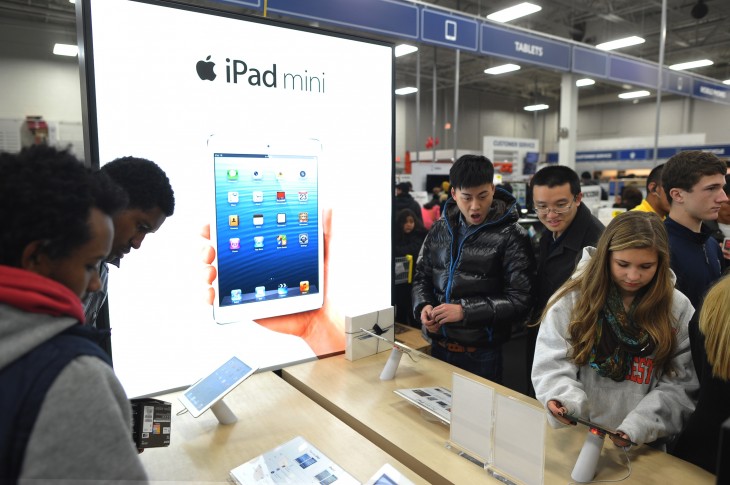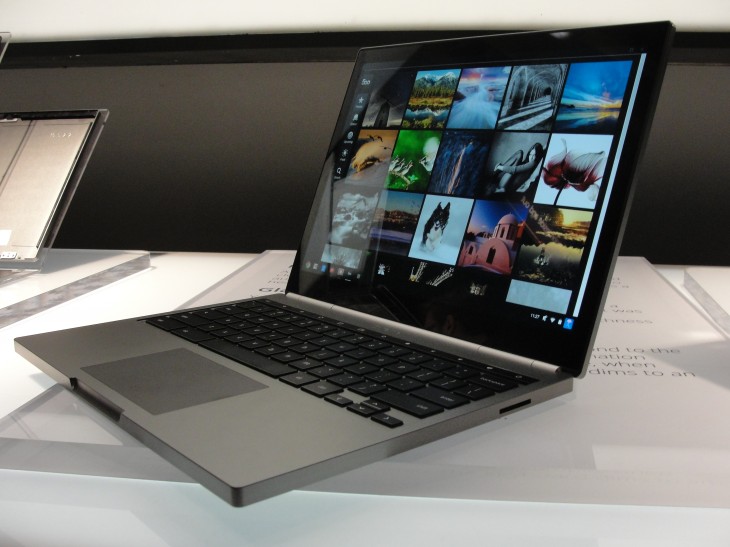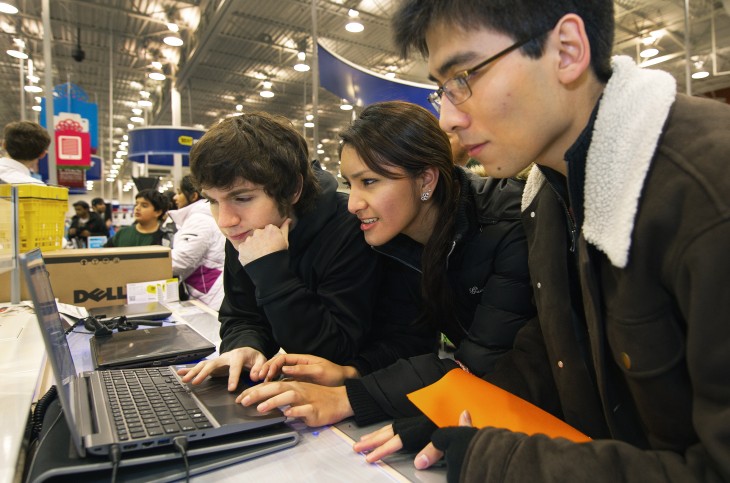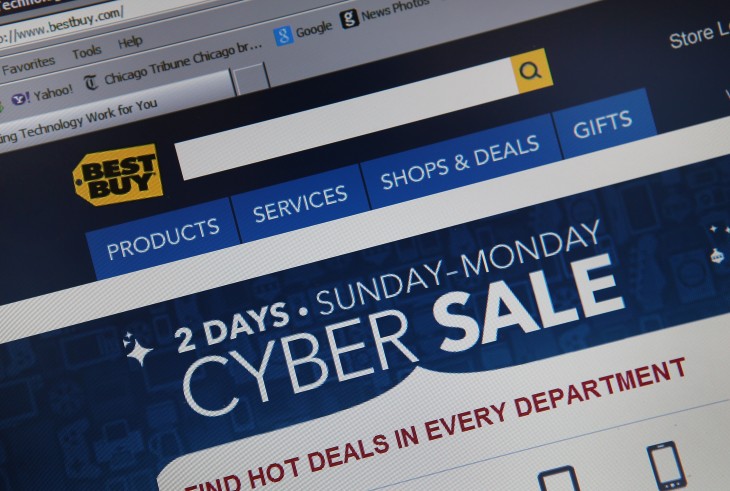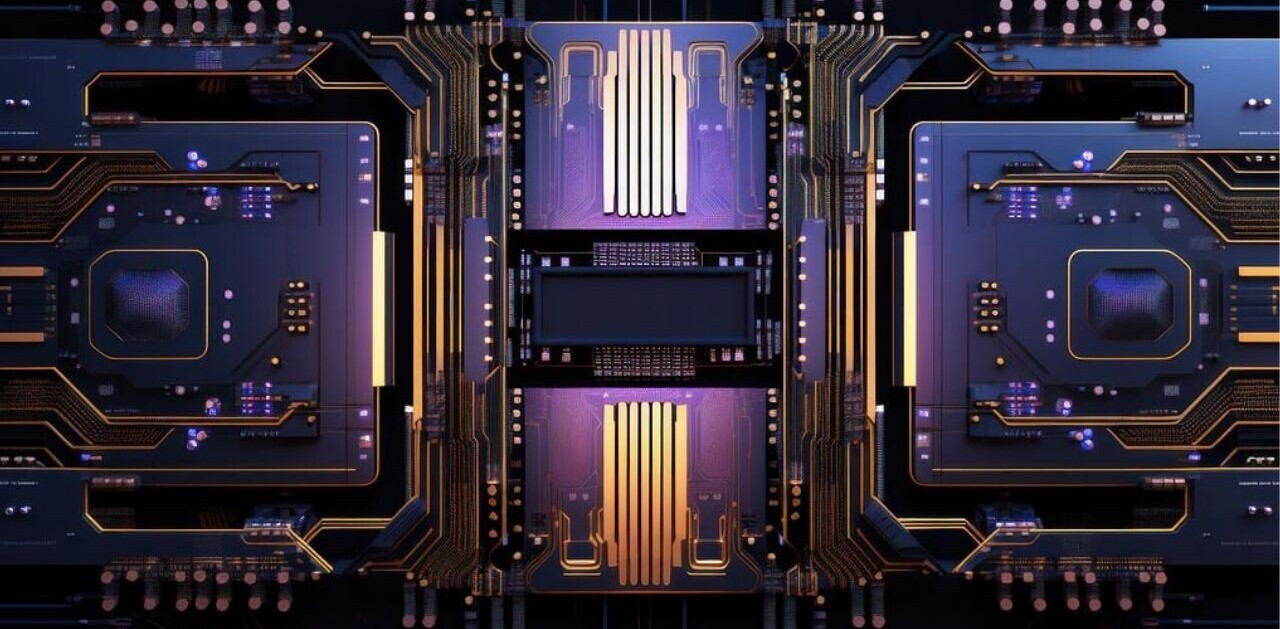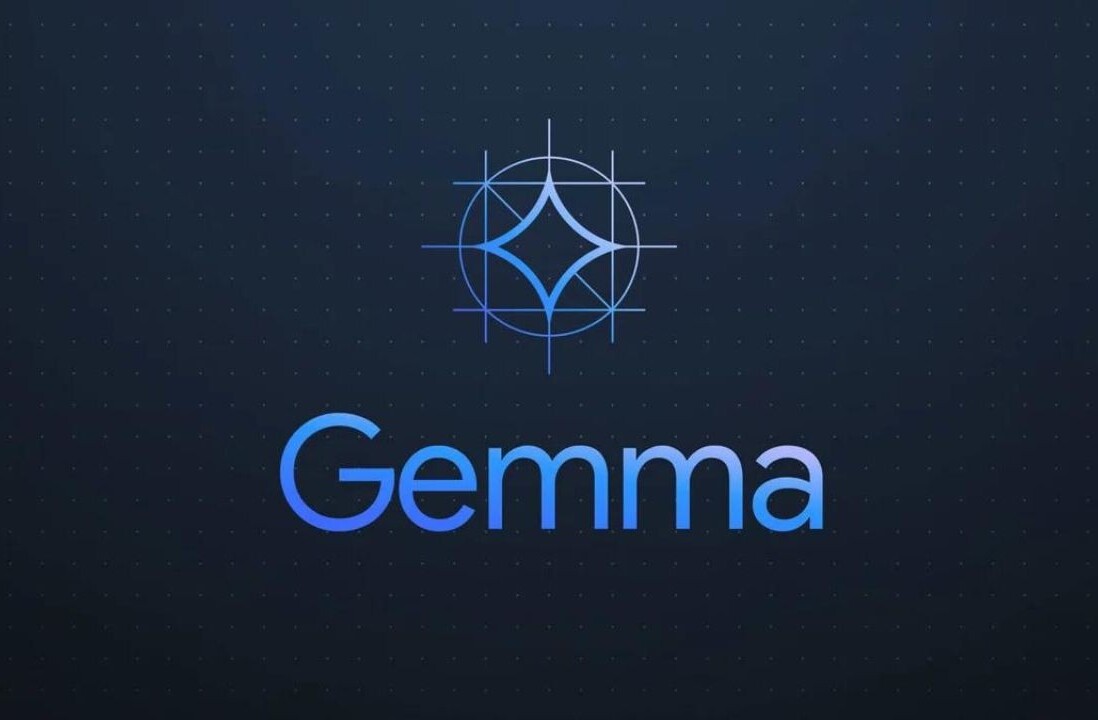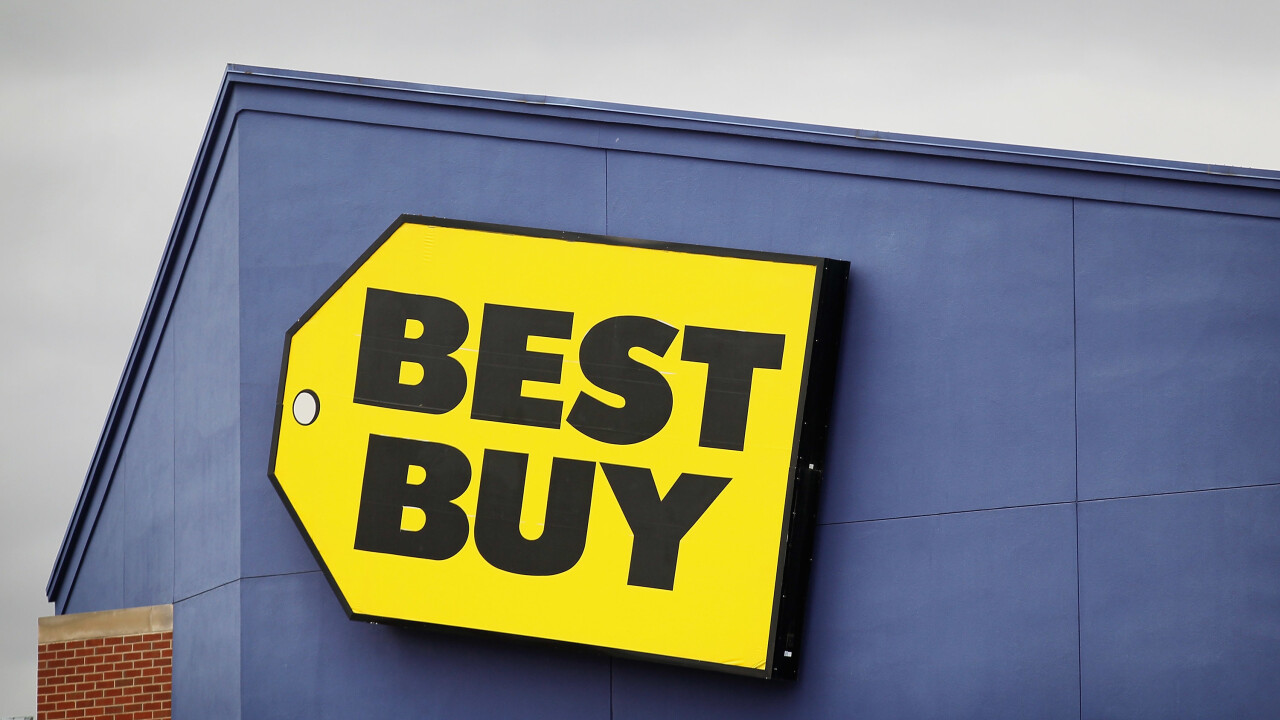
Shopping is dead. Long live shopping.
Okay, so maybe we should clarify that a bit. Brick-and-mortar stores are becoming a tad bit passé. Customers are flocking to sites like Amazon, eBay, and other online retailers to get what they want. I jokingly asked a friend if they wanted to go to Costco one weekend and they replied that they now order everything through Amazon Prime. You can get anything ordered online.
Technology has certainly been affected by this trend as companies like Circuit City, CompUSA, and other retailers have shut their doors. Best Buy has become the lone survivor amidst all this calamity, but it’s not immune to its effects. It has found itself nearing bankruptcy only to land back on solid ground.
Amidst all of the turmoil in the retail space, why is it then that technology giants like Apple, Google, Microsoft, and Samsung are looking at Best Buy to help pitch its wares to the public — and is it working?
The “try before you buy” experience
Despite Best Buy’s trials and tribulations, it seems that the retail giant has become a bit of a darling for the likes of Apple, Google, and Microsoft, all of whom have established presences in many of the retailer’s 1,990 stores worldwide (according to its 2013 figures). Just walk into some of its biggest stores and chances are that you’ll notice that in the computer section, the technology companies have set up outposts so customers can find their hardware.
Sure, Microsoft and Apple both have their own stores located throughout the country, in malls and shopping strips, but along with Google and Samsung, they’re vying for foot traffic within an existing store. What exactly is the motivation here?
It’s because of the foot traffic that the company receives and the “try before you buy” type shopping experience a customer gets before making such a significant purchase. For some people, being able to test out an iPad, Android, or Microsoft Surface device is a personal thing. After all, you’ve probably solicited feedback and reviews from your friends, many that swear by a particular operating system or device, but until you’ve actually experienced it yourself, you won’t know what you want.
People very much still prefer the hands-on experience when it comes to technology and there’s only so much detail you can get from a website. Do you know exactly how sharp something is if you just hear that it has a 2048 x 1536 screen resolution at 264 pixels per inch (ppi)? The average consumer might not. And how do you know if you would like to have a device with iOS, the latest Android OS, or Windows 8.1 installed?
The IKEA of technology
As we mentioned earlier, Best Buy has made some strategic partnerships whereby OEMs and hardware manufacturers have set up outposts inside the big box retail store.
Apple was one of the first big partners Best Buy had. Back in 2008, the retailer teamed with the maker of the iPhone to sell the mobile device in its store. Today, you can’t walk into one without seeing the nice lit sign in the computer section where kids and adults are playing with the latest iPad or MacBook product — hell, that’s where I bought my MacBook Pro. Even back then, the amount of space dedicated towards Apple wasn’t a lot, but it still stood out as a tribute to all things iOS inside a store filled with thousands of products.
Next came Google, which decided to move beyond mobile phones and stretch its arms into computers. With the introduction of tablets and computers like the Samsung Chromebook and the Chromebook Pixel, Google moved to set up its outpost in select Best Buy retail stores. I happened to see one in the San Francisco Bay Area and it paled in comparison to anything Apple had — it had two salespeople in a small outpost, most likely due to the company’s limited product line in-store.
Earlier this week, there was speculation that Google would be selling its Glass device at Best Buy stores. When released to the public, it was reported that it would go for $299. However, that rumor was swiftly refuted by Google spokesperson Chris Dale who said, “Google Glass is not coming to Best Buy in 2014…” He didn’t, however, rule out any future plans.
Interestingly, if you read into the rumor, it’s not necessarily about Google Glass, but could be potentially about the Mountain View-based company seeking to launch a bigger in-store experience compared to what it already has. And with the rumored appearance of the Google TV and the rave reviews of its Chromecast device, could we be seeing Google reinvigorating its setup in-store to perhaps educate consumers on the expansive integration capabilities it has between phones, tablets, television, and computers?
Microsoft is getting into the action too with a recent agreement it made with Best Buy. But it’s not stopping with just setting up a table in the store — it’s actually looking to dominate the entire computer section and redesign it into something that’s mimics its own Microsoft stores that you would find in malls around the country.
The experience is no longer about whether you want that Toshiba, HP, or Dell laptop. Instead, it’s about Microsoft and its Windows platform seeking to bolster its dominance over the computing industry. Best Buy’s partnership results in 600 of its stores acting as hubs for Microsoft products, including its PCs, tablets, accessories, and even support from trained staff.
And it’s not joking around with the space, as the average outpost will be between 1,500 and 2,200 square feet, designed to showcase the performance, speed, and power of Windows-based devices. Tami Reller, the Chief Marketing Officer and Chief Financial Officer for Microsoft’s Windows Division said at the time:
The Windows Store offers a large-scale, hands-on customer experience that will show customers how Windows and Microsoft devices and services can make it easier for them to work and play. We’re pleased to partner with Best Buy in bringing the latest technologies to consumers at scale in a unique environment where they can explore how Microsoft products fit together across entertainment, travel, music, and other scenarios.
And there in that quote lies the intent of all of these big tech companies. What you get from stepping foot into a Best Buy store is an experience. In a way, it’s analogous to what you might get walking through an IKEA furniture store where you stop through the kitchen department or the living area section of the store and see how things are staged — it’s that experience one gets when passing through the affected Best Buy locations.
Microsoft, Google, Apple, and even Samsung, have brought their marketing dollars to the retail stores to go directly to the consumer and show them how their lives can be affected through their technology. In somewhat of a slap in the face, one could say that these companies don’t trust Best Buy employees to look out for their best interest, so that’s why they’re training specific personnel to be their evangelists in-store.
Extended reach
Best Buy certainly gives Apple, Google, Microsoft, and Samsung the IKEA of technology experience and it also lets customers do the test drive before they buy, but these companies also look to the retailer for another key thing: reach.
With 1,900 stores scattered worldwide, Best Buy is perhaps considered to be the dominant technology retailer in the market today, especially with the likes of Circuit City and CompUSA being shuttered. Where else can millions of consumers walk into and find the computer, phone, tablet, television that they want and get a hands-on feel to it?
The latest products are released by these companies in typical press fanfare, such as Google’s Nexus 7, the Motorola Moto X, Apple’s iPad Mini, and the Samsung Galaxy S4. But while people could be hooked by what they see in media coverage, there’s still a sense by some that they want to test it out themselves.
And here’s another problem that companies like Google and Samsung have: they don’t have physical retail stores so their marketing campaigns might not have the same impact through third-party resellers like Verizon, RadioShack, etc. who carry multiple products but don’t offer the same experience. Microsoft is running into the same type of problem, although it has its own retail stores, but not in as many locations as Best Buy.
Apple isn’t that worried, but it’s certainly seen more sales of its popular products by diversifying the number of partners that sell its wares.
Does this benefit Best Buy?
Will Best Buy’s strategy pay off over the course of the long-term? It’s unclear, but based on its recent quarter performance, it’s hoping so. Company President and CEO Hubert Joly said in a statement:
As expected, comparable store sales were down 0.4 percent. But this was driven by short-term disruptions caused by the retail deployment of the Samsung Experience Shops, Windows Stores, and floor space optimization, as well as our continuing rationalization of non-core businesses. Excluding these impacts, Domestic comparable store sales were flat to slightly positive for the quarter.
Based on Joly’s own assessment, the company’s sales haven’t been budging in the right direction and it needs to do something in order to bolster its standing and continue to rival that of Amazon. Investors in the public company are particularly happy and following its announcement that it had partnered with Samsung, it saw its stock price increase 16 percent.
It appears that investors are approving of Best Buy’s strategy. In looking at its stock price over the past year, it has gone up from a low of $11.29 per share to a high of $35.08. Of course, it’s not wholly attributed to these partnerships and its efforts to match Amazon prices in-stores, but these things certainly played a big part.
Christopher Horvers, an analyst with J.P. Morgan, said that Apple and Samsung are two of Best Buy’s largest vendors and have accounted for nearly a fifth of combined sales.
But it’s not about the investors, but more about the traffic coming to Best Buy properties. In FY 2012, the company saw 600 million people walk into its store and had 1 billion online. How did that translate into sales? It brought in $50 billion in revenue. With its new experiential marketing program, will it lead to more customers buying from the store?
The online and offline bundle
Setting up real estate inside a Best Buy isn’t enough for Apple, Google, Microsoft, and Samsung. These companies want the whole package and that includes both offline and online appeal. Getting customers physically in a store is one thing, but if they leave to go to Amazon, eBay, or any other virtual marketplace, who’s to say that the experience isn’t lost.
Companies want customers who buy from Best Buy to capture the experience they’re presenting and also to find it a part of their existence. Best Buy perhaps understands this and has since stepped up its game with a new policy that enables users to buy anything either at the store or on BestBuy.com. The retailer says that what makes this appealing to customers is that if it’s out of stock online, local stores can fulfill the order, keeping the customer and the sale.
As the Star Tribune reported in June:
2 to 4 percent of customers each month didn’t buy something because the website said it ran out of the product, according to company data. However, Best Buy estimates that in 80 percent of those cases, the products in question were sitting on a shelf or the backroom of a store. In other words, Best Buy is leaving money on the table because it can’t connect the two sides — stores and website — of the same business.
Best Buy certainly needs to find ways to improve its standing in the online space. Based on its Q2 2014 fiscal year earnings, the company saw domestically $7.8 billion in revenue, with 10.5 percent coming from online sales. This percentage fit Best Buy’s goal and so far has helped it move forward with its direction of combating other retailers where people would go.
The next generation technology showroom
It might be a bit too early to tell whether Microsoft’s and Samsung’s experience will pay dividends. But, could we be seeing more of these type of outposts in-store in the future? What about when Pebble starts diversifying its offering or if Leap Motion decides it wants to build a bigger ecosystem of products and wants to follow suit with what Microsoft has done?
Best Buy is certainly becoming that showroom area for the next generation of technology, something that is easily accessible to mainstream customers who want to have the touch and feel experience before making that critical purchase.
So is Best Buy the retail amore of Microsoft, Google, and Apple? Are these technology companies going after Best Buy because customers see the retail company as an independent and un-bias provider of electronic products and gadgetry?
It seems the battle for supremacy isn’t to be waged in their own retail stores, but one big box retailer.
Photo credits: Scott Olson/Getty Images, MANDEL NGAN/AFP/Getty Images, Matt Stroshane/Getty Images, Scott Olson/Getty Images, GLENN CHAPMAN/AFP/Getty Images, Microsoft, PAUL J. RICHARDS/AFP/Getty Images, and MANDEL NGAN/AFP/Getty Images
Get the TNW newsletter
Get the most important tech news in your inbox each week.
